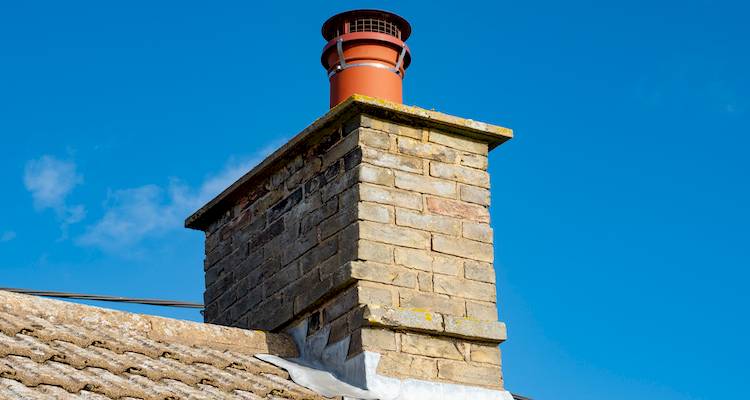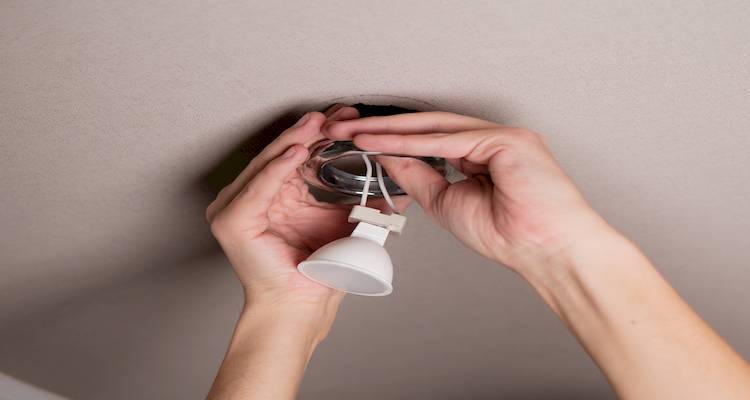Garden Steps Cost
- The average cost of installing garden steps is around £815
- The job will take approximately 1 to 4 days to complete
- A complete pricing breakdown which includes cost factors to consider, what types of garden steps are available, along with what such a task usually involves
- How long the job should approximately take and a general overview of what types of services can be performed
- How to find and hire a garden step installer
Do you want a nice set of garden stone steps, but not sure where to start?
We'll tell you about the average cost of stone steps, how to save money, find a stone step installation specialist, and what questions to ask when they come to give you a quote in this guide.
Just need a quote?
If so, we can help! We have a range of local builders ready to offer you a free quote!
Read on for more information.
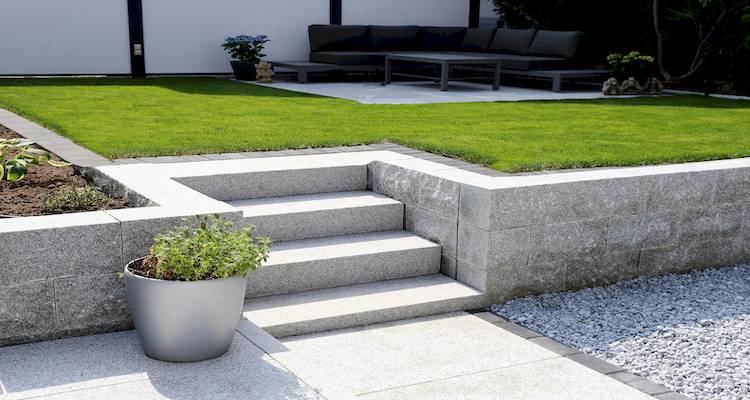
£815
Table of Contents
- How Much Does Installing Garden Steps Cost?
- Supply Only Costs
- Labour Costs and Timescales
- Cost Factors of Fitting Garden Steps
- Types of Garden Steps
- What's Involved in Fitting Garden Steps?
- Can I Install Garden Steps Myself?
- Building Regulations & Planning Permission for Fitting Brick/Stone Steps
- Hiring Contractors for Fitting Brick/Stone Steps Checklist
- FAQs
- Sources
How Much Does Installing Garden Steps Cost?
Garden steps cost varies depending on their purpose, as steps in your garden may be functional due to two or more levels, or they may be part of a landscaping project. You may even require steps to access your front or back door.
Stone steps are an amazing addition to any home. Stone comes in various colours and types, and you can buy it already cut into a step shape or have it cut to your specifications.
Handling heavy materials is required when installing stone slab steps. A single misstep or slip of the hand can severely damage the material. It would be a shame if the steps developed cracks before you could even install them.
Handling the steps provided by the suppliers can also be challenging. For example, some steps are delivered in the form of large tiles. Installing them can be difficult if you are inexperienced.
So, how much does a brick/stone steps installation cost?
A set of four slate steps (one metre wide) will cost between £730 and £930, while a set of four Portland stone steps (one metre wide) will cost between £900 and £1,100.
A set of six granite steps (three metres wide) will cost between £2,265 and £2,715, while a set of six cast stone steps (two metres wide) will cost between £1,415 and £1,790.
Please can you tell me if I need to find a general builder to widen concrete steps or someone with a specific skill/trade? Many Thanks.
Garden Steps Prices
Stone Step Prices
| Type of Stone Step | Total Cost |
|---|---|
| A set of four slate steps | £700 - £1,000 |
| A set of four sandstone steps | £650 - £950 |
| A set of four limestone steps | £900 - £1,200 |
| A set of four cast stone steps | £600 - £900 |
Brick Step Prices
| Type of Step | Total Cost per m² |
|---|---|
| Facing brick steps | £80 – £100 |
| Ordinary brick steps | £40 – £55 |
| Handmade brick steps | £160 – £200 |
| Recycled brick steps | £20 – £220 |
Supply Only Costs
If you want to build garden steps into an earth slope, you can use various materials, from bricks to concrete slabs, wood to gravel, and concrete to big flat stones. The design is heavily influenced by the material used, the gradient, and the length of the slope. We will only go over the supply costs and what you can expect.
Slate will cost between £40 and £60; Marble will cost between £50 and £70; Granite will cost between £35 and £45; Limestone will cost between £35 and £45, and York stone will cost between £45 and £63.
Sandstone costs between £36 and £45, Portland costs between £60 and £90, and cast stone can cost between £25 and £35.
A builder’s line and pegs will cost £3 - £8; a tape measure costs £3 - £7, and a spade will cost you £8 - £15. You will need a spirit level to ensure your steps are flat and level. This will cost you £7 - £11; stretcher bond bricks will cost £2 - £6, and an earth rammer will cost £28 - £33.
Labour Costs and Timescales
The most expensive aspect of a garden brick steps project is labour. Before beginning the laying and treating of the bricks, the area must be prepared. A skilled bricklayer will typically charge between £150 and £200 per day.
A typical day rate for an assistant can range between £70 and £100. Although it may appear to be an expensive extra cost, keep in mind that more people mean a faster completion of the project.
One metre wide, two steps to the doorway would cost £150 - £200 per day and typically take your labourers one day to complete. A tradesperson would charge you £150 - £200 per day for two to three days for three metres wide, three-step patio steps with 430mm treads. The semi-circular single brickwork step to the doorway would take two days and cost between £150 and £200 per day.
Cost Factors of Fitting Garden Steps
The Number of Steps
The total cost of installing brick steps is affected by the number of installed steps. The more steps that must be installed, the more material that must be used and the higher the labour costs.
Brick Style
There are many different brick options, and you should do your research or consult with a professional to determine which type of bricks will work the best for the project you're working on.
- Handmade Bricks – Because handmade bricks are more expensive than regular bricks, they are made by hand. They are commonly found on houses in nature reserves
- Wire-cut bricks – wire cut bricks are a type of facing brick that has holes running the length of the brick
- Reclaimed bricks have previously been used but have been cleaned and reused
- Standard concrete bricks – Common bricks aren't as strong as other types of bricks, and they're mainly used for internal applications where strength isn't an issue
- Engineered bricks – engineered bricks are commonly used where strength is required. For example, they are commonly used in damp-proof courses or retaining walls
- Facing bricks are by far the most commonly used type of brick. They can be found in houses all over the UK
Taking Down Old Steps
Existing steps may need to be demolished and the waste disposed of. The builder could include this in the quote, but it will increase the brick steps cost. A bricklayer's labourer can do the work. Expect to pay between £40 and £55 if it takes half a day.
Handrail or New Balustrade
If you are installing multi-level decking, which is why you are building steps, you may also require a balustrade for security reasons. Alternatively, a handrail on patio steps may be desirable to make it easier for family and friends to climb and descend.
A metal handrail for a garden stairway will cost between £100 and £150, and installation will take about an hour and will cost between £50 and £75. Balustrades begin at £40 per metre and can cost up to £150 per metre, depending on the material used.
Skip Rental
If you have old steps removed or a section of your garden dug up for new steps, you may be required to remove the waste yourself. If this is the case, hiring a skip will be much easier. Skip hire costs around £150 but expect to pay more if you live in London. Provide a question about garbage removal in your request for quotes. Perhaps the builder will also include this in the quote.
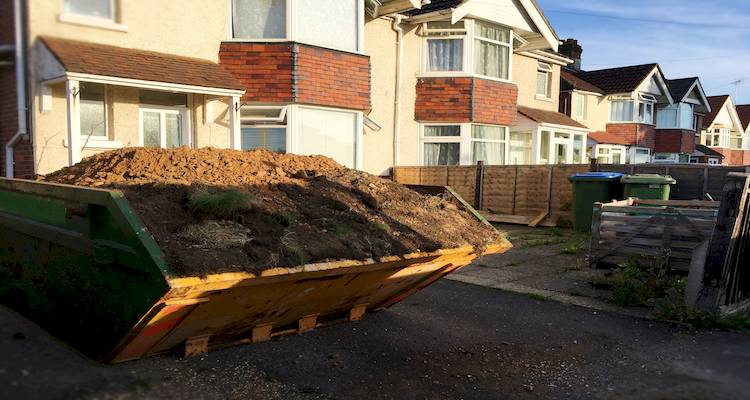
If you don't want to pay for a skip, you can always bag up any cracked concrete and keep any unbreakable bricks. You could then post them on websites like Gumtree or Preloved, where people typically look for hardcore material or even used bricks.
Lighting
It is always good to have some type of lighting with steps to make using them easier and safer. A wall light can be installed for around £30. Solar lights can also be used to encircle your steps. They are a cost-effective option, with prices starting at around £10.
If you want security lights, you can install lights that can be turned on and off from inside your home or a motion-controlled light that will turn on when someone or something enters your garden or steps.
Types of Garden Steps
Bricks are the least expensive material for steps. They can be rough or smooth, come in various colours, and have a multi-coloured or mottled appearance. If you have an older home, you can even find used bricks with a weathered appearance that will blend in with your walls - though they are not cheap and may not be frost-resistant.
Bricks On The Face
Available in a wide range of colours and textures. Facing bricks are the most common type of brick and are probably the ones you are most familiar with. Facing brick faces outward from a building and is visible to the rest of the world. As the foundation of a building structure, facing bricks are designed to be stronger.
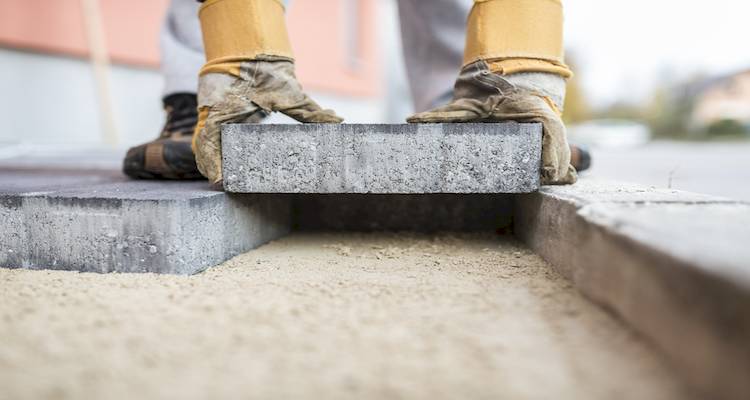
PROS
- ✔ Variety of colours and textures
- ✔ Strong
CONS
- ✖ Expensive
Ordinary Bricks
These are often laid where they will not be visible because they are less expensive and less attractive than facing bricks. Common bricks are the most common type of brick and the most used building material in building architecture.
This brick variant is made from basic clay and does not have any special appearances, surface treatments, or colour control.
PROS
- ✔ Affordable
- ✔ Popular
CONS
- ✖ Not aesthetically pleasing
Bricks Made by Hand
The most expensive type of brick is handmade brick. Best for achieving an authentic appearance and building in conservation areas. Handmade bricks provide an authentic look if you want to match existing bricks or build a home in a conservation area.
In addition, handmade varieties provide more flexibility because they can be built with standard or nonstandard-sized bricks, resulting in an instantly characterful and charming appearance.
Handmade bricks have a rougher, more open texture and an appealing creased face. You can achieve a more bespoke look with various colours and sizes — but this is built into the price, which is roughly four times that of machine-made.
PROS
- ✔ Provide an authentic look
- ✔ Rougher texture
- ✔ Variety of colours and textures
CONS
- ✖ Expensive
Recycled Bricks
If you're demolishing a house and constructing a new one on the same lot, you can reuse bricks from the previous structure(s) if you want to replicate the look or are required to do so due to a planning condition.
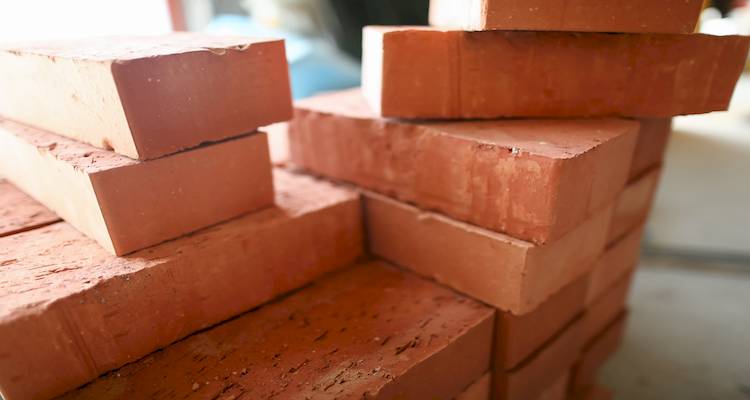
Another good source of used bricks is reclamation yards, but getting enough quality for a whole house or a big extension can be difficult. In addition, wastage is common, and you may need to discard some.
PROS
- ✔ Recycled
- ✔ Cost-effective
CONS
- ✖ Can create wastage
Limestone Steps
Limestone has been used as a building material for generations, as it is strong and durable.
It's a sedimentary rock and great to use as steps as you're less likely to slip on them.
PROS
- ✔ Strong
- ✔ Durable
CONS
- ✖ Can be expensive
Slate Steps
Slate is long-lasting and also looks perfect in any garden.
It's a great natural stone to create steps from as it's very durable.
PROS
- ✔ Very Durable
- ✔ Attractive
- ✔ Great in all weather
CONS
- ✖ Difficult to repair
Sandstone Steps
Sandstone is an attractive natural stone that resembles sand and is very unique.
It comes in a range of different colours and is great to use for garden steps.
PROS
- ✔ Attractive
- ✔ Durable
- ✔ Unique
- ✔ Great texture
CONS
- ✖ Can absorb water if not treated
- ✖ Can stain
Cast Stone Steps
Cast stone is not a natural type of stone but a manmade stone that's durable and versatile.
PROS
- ✔ Simple & quick to install
- ✔ Very resistant
CONS
- ✖ Heavy
- ✖ Hard to repair
What's Involved in Fitting Garden Steps?
If you want to build garden steps into an earth slope, professionals can use various materials, from bricks to concrete slabs, wood to gravel, and concrete to large flat stones. The design is heavily influenced by the material used, the gradient, and the size of the slope.
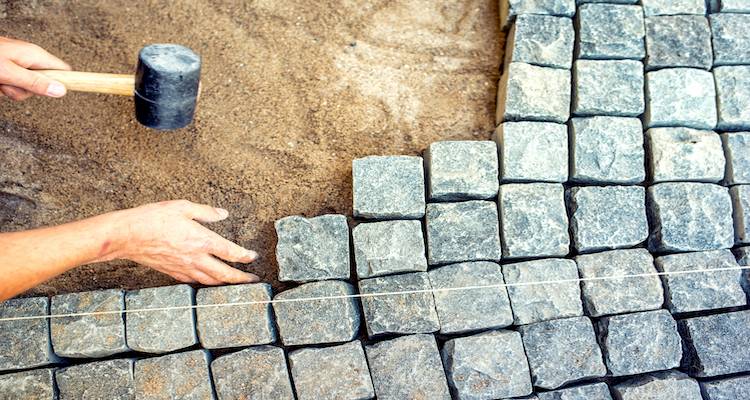
Take a look at the steps below on how to build brick steps:
Site Preparation
Your contractor begins by outlining the site with a builder's line and pegs. They'll fix two parallel lines down the slope to mark the steps' outer edge and two more to mark the top and bottom. Professional installers confirm that corners form a right angle with a builder's square.
To determine how many treads and risers are needed, your tradesperson measures the stairwell's height and horizontal spacing. They'll mark the back of the highest tread with a peg, then place one end of a long spirit level at the top. The contractor measures the horizontal distance to the first riser and vertical distance to the floor.
Foundation Work
Your installer divides the vertical height by the riser height and uses tread-riser pairings charts to determine required tread length. They'll remove any turf in the marked-out area and mark the back of treads with lines, setting them back an extra 50mm for working room. The contractor roughly shapes the steps with a spade, leaving 100mm of hardcore beneath concrete slab treads.
They dig a 125mm deep trench for the first riser's footing. Before pouring concrete, they drive-in pegs levelled with a spirit level to mark the footing surface. The concrete is poured ensuring the floor is level with pegs, then left to dry for 24 hours before building.
Construction Process
Your contractor makes mortar by combining four parts sharp sand and one part cement. They construct the first riser on the concrete footing using two skins of stretcher bond bricks, always using a spirit level to ensure horizontal alignment. Professional installers install hardcore behind the riser and compact it with an earth rammer.
They then create a continuous concrete bed on the riser and hardcore, then place the first tread slab on top with a 40mm overhang. They check treads for slight fall towards the front edge and apply mortar to all joints. This process continues for each step, ensuring tread lengths are correct and treads remain parallel.
Specialised Applications
For freestanding steps built on flat floors alongside existing garden walls, professionals create supporting walls for flights up to five steps using concrete footing strips. Longer flights require a concrete pad under the entire structure. When installing brick steps parallel to existing brick walls, your contractor ensures the stairway bricks match the existing wall and are properly toothed in for security.
Can I Install Garden Steps Myself?
Building stone steps is an exciting and fun project. You'll be rewarded with a beautiful set of stone garden steps when you're finished. They look beautiful in your yard, garden, path leading to your patio, or in the middle of a steep bank path.
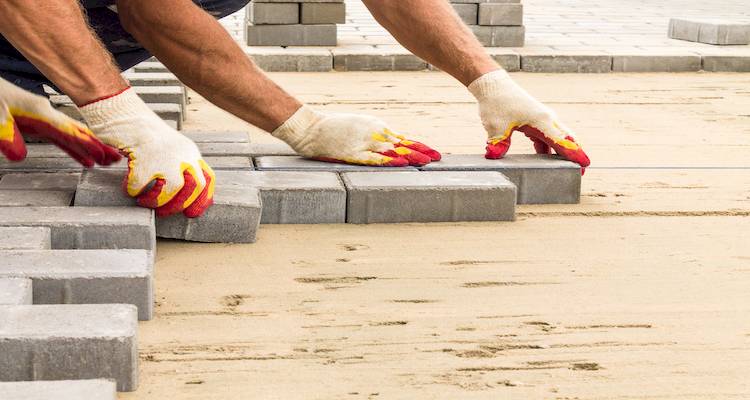
Most people leave it to the professionals, and to be truthful, it is not the easiest task to complete on your own, especially if you have no prior experience. Building brick/stone steps has some difficult sections that require expertise.
A professional bricklayer can lay approximately 600 bricks per day and you will not be able to come close to this efficiency. While choosing DIY might save money on installation costs, you must factor in the cost of necessary equipment and potential costly mistakes.
Why Hiring a Professional is Important
Common DIY errors that professionals avoid include not digging deep enough base areas, failure to compact the base properly, and improper bedding sand installation. These mistakes result in sunken or raised pavers that require expensive repairs later.
Professional contractors use proper techniques like screeding for bedding sand installation and correct drag-and-drop methods for stone placement. They ensure your gravel base is flat and firm, preventing future structural problems.
Building Regulations & Planning Permission for Fitting Brick/Stone Steps
When designing steps, it is critical to ensure that the tread and riser dimensions are consistent, i.e., that each step has a rise of x mm and a tread of y mm. larger flights of steps can benefit from the addition of extended treads known as Landings, which provide a safe resting spot for non-mountaineers.
There are two common layouts for a flight of steps in most situations. The plain step has a constant width, whereas the wraparound step has a more pyramidal shape, with one or both sides of the flight increasing in width as the step descends.
A handrail is almost always required on a steep or long flight of steps, like these old granite steps in a city centre. Galvanised steel tubing is the preferred material for most brick, block, flagstone, or concrete steps, and they are best fabricated to site dimensions by a local light-engineering company. Timber steps may include a wooden handrail.
If they are frost-proof, engineering bricks can be replaced with walling blocks, artificial stone blocks, or even house bricks.
Hiring Contractors for Fitting Brick/Stone Steps Checklist
When you request a quote, make certain that it includes all costs and labour. Here are a few things to look for when hiring someone to fit brick/stone steps.
- Do they have any credentials? Some bricklayers may have learned their trade through an apprenticeship. They may also have a city and guilds qualification or a building qualification. Any of these indicate that they will know what they are doing
- View some of their work. Ask to see illustrations of walls they have built-in gardens before, if possible, so you know what quality to expect
FAQs
How do you build brick steps?
With the mallet, gently tap each brick into place, leaving 0.5-inch between each brick. Filling this space with mortar will require you to use the trowel. Continue to use the level to ensure that the bricks are straight and even in all instructions.
Continue to build up step by step, keeping each step one size shorter than the one below until all the steps have been mortared in. Then, after completing each step, use the level to ensure that it is straight in all directions.
How do you build stone steps on a slope?
Then, using spray paint, mark the lines and measure the slopes between the path's approximate high and low points. Both points roughly represent level path heights. Steps will transport you from one level to the next.
Measure the height difference with a level string line to determine the number of stone steps. Then divide that figure by the height of the step block you will use. Don't be concerned if the result is not exact. Plan for the fewest number of steps possible. You can easily make up the difference when building the paths by slightly raising the lower path or lowering the upper path.
How do you get paint off stone steps?
How do you clean outdoor stone steps?
How long does it take to build brick or stone steps?
Sources
https://www.pavingexpert.com/featur01
https://westerninterlock.com/6-common-paver-installation-mistakes/



